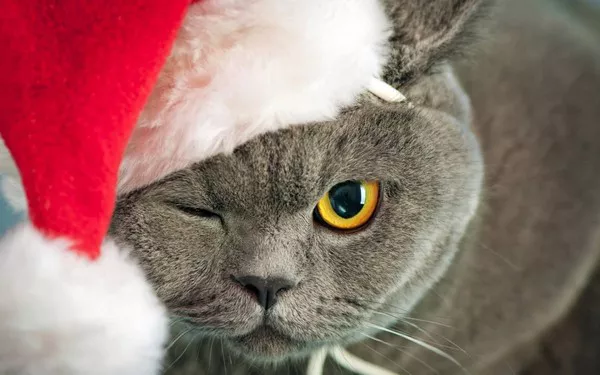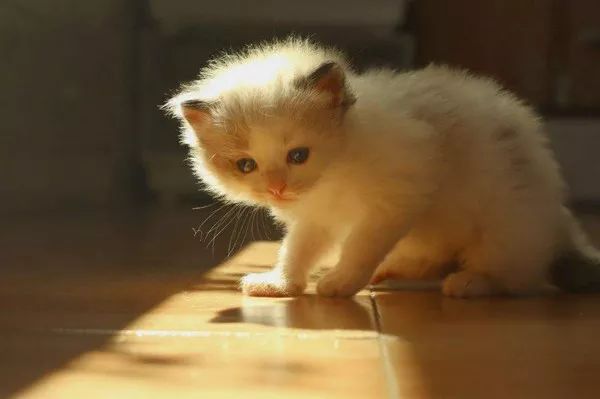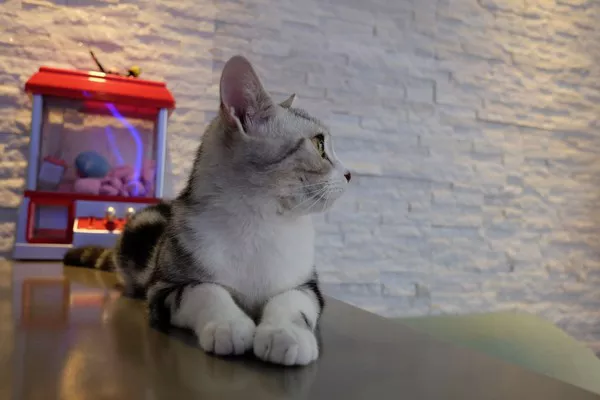Calico cats are a marvel of nature, showcasing a beautiful mosaic of colors in their fur. These feline companions are known for their distinctive tricolor coat patterns, featuring patches of white, black, and orange or cream. However, one intriguing phenomenon often observed by cat enthusiasts is the gradual darkening of a Calico cat‘s coat over time. In this article, we delve into the fascinating world of Calico cat genetics, exploring the reasons behind this enigmatic color transformation.
The Genetic Tapestry of Calico Cats
To comprehend why Calico cats undergo a darkening process, it is essential to first understand the genetic basis of their unique coat patterns. Calico cats, also referred to as tricolor or tortoiseshell cats, owe their distinctive hues to the interplay of two key genes: the O gene and the B gene.
The O gene, responsible for determining the presence of orange color in a cat’s coat, comes in two variants – O and o. The O allele produces orange pigment, while the o allele suppresses the production of orange pigment, leading to a non-orange (black or chocolate) color. Female Calico cats, with two X chromosomes, can have a combination of O and o alleles on each chromosome, resulting in a mosaic of orange and non-orange patches.
The B gene, on the other hand, influences the distribution of black pigment. It has two alleles – B and b. The B allele produces black pigment, while the b allele leads to the production of brown pigment. The interaction between these two genes creates the intricate patterns that adorn a Calico cat’s fur.
Understanding X-Inactivation: A Key Factor
One of the key factors contributing to the dynamic nature of a Calico cat’s coat is a phenomenon known as X-inactivation. In female mammals, including cats, one of the X chromosomes in each cell undergoes random inactivation during early development. This process ensures that females do not produce an excess of proteins encoded by the X chromosome.
In the case of Calico cats, where the X chromosome carries the genes responsible for coat color, X-inactivation plays a pivotal role. Each cell in the developing cat embryo randomly inactivates one of its X chromosomes, leading to the expression of either the O or o allele in a given cell. This randomness in X-inactivation results in the creation of distinct patches of color on a Calico cat’s coat.
The Role of Hormones in Coat Color Changes
As Calico cats mature, hormonal changes can further influence the appearance of their coat. Hormones play a crucial role in regulating gene expression, and fluctuations in hormone levels can impact the intensity of colors in a cat’s fur.
Female Calico cats often experience hormonal variations during different stages of their lives, such as puberty, pregnancy, and adulthood. These hormonal shifts can affect the expression of genes involved in coat color, leading to subtle changes in the brightness and saturation of orange, black, and white patches.
The Gradual Darkening Phenomenon: A Natural Evolution
The phenomenon of Calico cats getting darker over time is a result of the intricate interplay between genetic factors, X-inactivation, and hormonal influences. As a Calico cat ages, several factors contribute to the gradual darkening of its coat:
Accumulation of Pigment Cells: Over time, the accumulation of pigment-producing cells, known as melanocytes, in specific areas of the skin can lead to the darkening of those regions. This process is influenced by genetic factors and the natural aging of the cat.
Hormonal Changes with Age: As a Calico cat matures, hormonal changes associated with aging can impact the balance of pigment production. This can result in alterations in the distribution and intensity of colors, leading to an overall darker appearance.
Genetic Variations: Individual genetic variations among Calico cats can also contribute to the darkening phenomenon. Certain cats may have genetic traits that predispose them to a more pronounced darkening of their coat as they age.
Environmental Factors: The environment in which a Calico cat lives can also play a role in coat color changes. Factors such as exposure to sunlight, diet, and overall health can influence the vibrancy and richness of the cat’s fur colors.
Health Considerations: When Darkening is a Sign of Concern
While some darkening of a Calico cat’s coat is a natural and expected part of the aging process, pet owners should remain vigilant for any abrupt or extreme changes in coat color. Sudden darkening or the development of unusual patterns may be indicative of underlying health issues.
Nutritional Deficiencies: Inadequate nutrition can impact a cat’s coat health. A well-balanced diet, rich in essential nutrients, is crucial for maintaining the vibrancy of a Calico cat’s colors.
Skin Conditions: Certain skin conditions, such as allergies or infections, can affect the pigmentation of a cat’s fur. Regular veterinary check-ups can help identify and address these issues promptly.
Hormonal Imbalances: Disorders affecting hormone levels, such as thyroid issues, can manifest in changes to a cat’s coat color. Monitoring a Calico cat’s overall health and behavior is essential for detecting potential hormonal imbalances.
Genetic Disorders: In some cases, darkening may be associated with genetic disorders affecting pigment production. Genetic testing can help identify such conditions and guide appropriate care.
See Also:What Breed Is My Long-Haired Calico Cat?
Caring for the Aging Calico: Tips for Pet Owners
As Calico cats age and their coats undergo natural changes, pet owners can take certain measures to ensure their feline companions remain healthy and happy:
Balanced Nutrition: Provide a well-balanced diet tailored to the specific needs of an aging cat. Consult with a veterinarian to determine the appropriate dietary adjustments.
Regular Veterinary Check-ups: Schedule regular veterinary check-ups to monitor your Calico cat’s overall health. Early detection of any health issues can contribute to better outcomes.
Environmental Enrichment: Create a stimulating and comfortable environment for your aging Calico cat. Enrichment activities, cozy resting spots, and interactive play can contribute to their well-being.
Sun Protection: Limit your cat’s exposure to direct sunlight, especially if they have predominantly white patches. Sunscreen formulated for pets may be recommended for outdoor activities.
Conclusion: Celebrating the Evolving Beauty of Calico Cats
In the captivating world of Calico cats, the gradual darkening of their coat is a testament to the intricate dance of genetics, hormones, and the aging process. These feline companions, with their ever-evolving mosaic of colors, offer a visual representation of the passage of time. By understanding the underlying factors contributing to this phenomenon, pet owners can better appreciate and care for their aging Calico friends, ensuring a graceful and healthy transition into each new stage of life. As we celebrate the evolving beauty of Calico cats, we embark on a journey that unravels the mysteries of their mesmerizing coat colors, revealing the wonders of nature within our own homes.
Related Topics:
Why Am I Allergic to Calico Cat?
How Do I Know if My Cat Is a Calico Cat?
How Much Is a Calico Cat in Singapore?



























